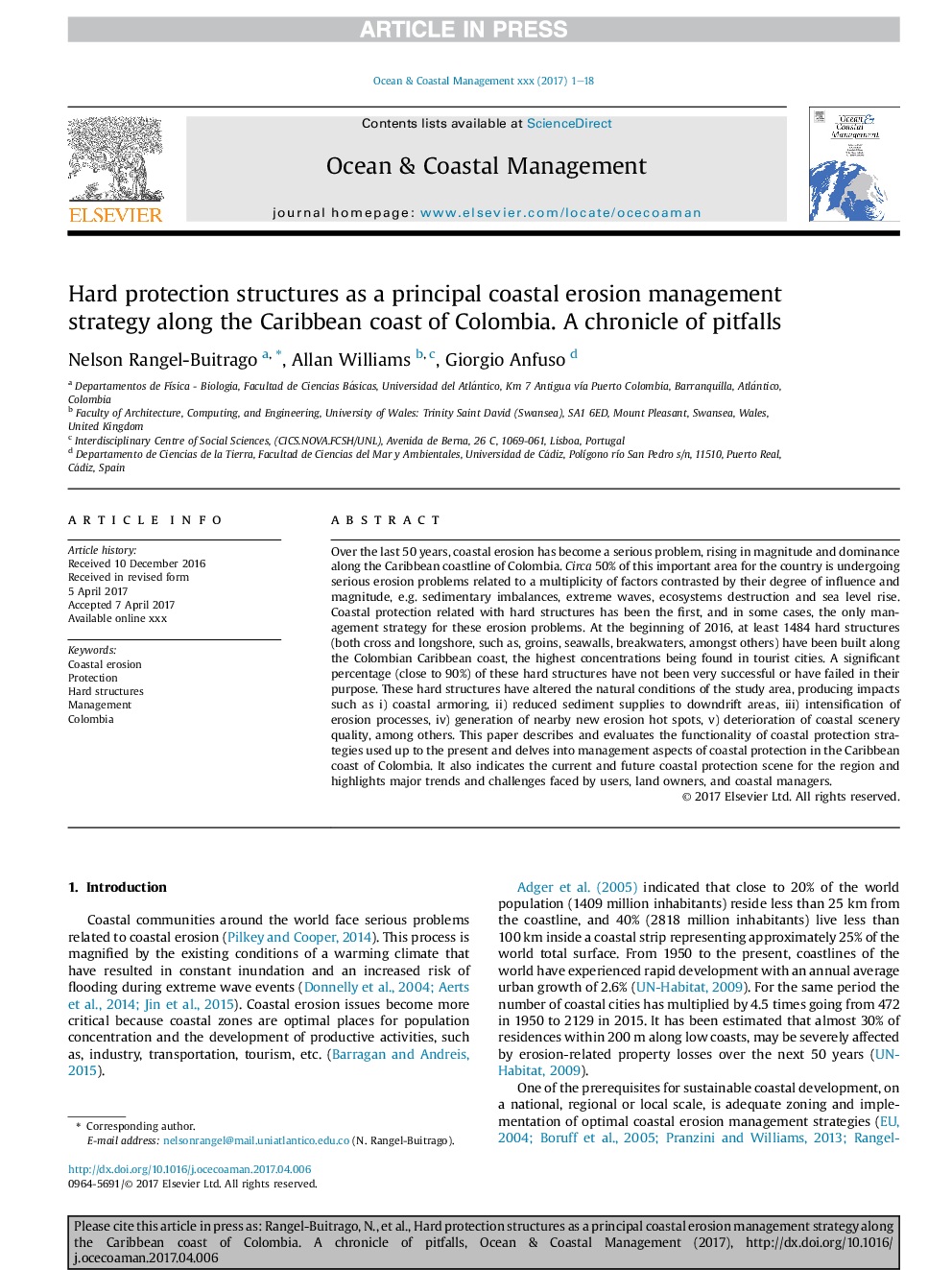| Article ID | Journal | Published Year | Pages | File Type |
|---|---|---|---|---|
| 8060750 | Ocean & Coastal Management | 2018 | 18 Pages |
Abstract
Over the last 50 years, coastal erosion has become a serious problem, rising in magnitude and dominance along the Caribbean coastline of Colombia. Circa 50% of this important area for the country is undergoing serious erosion problems related to a multiplicity of factors contrasted by their degree of influence and magnitude, e.g. sedimentary imbalances, extreme waves, ecosystems destruction and sea level rise. Coastal protection related with hard structures has been the first, and in some cases, the only management strategy for these erosion problems. At the beginning of 2016, at least 1484 hard structures (both cross and longshore, such as, groins, seawalls, breakwaters, amongst others) have been built along the Colombian Caribbean coast, the highest concentrations being found in tourist cities. A significant percentage (close to 90%) of these hard structures have not been very successful or have failed in their purpose. These hard structures have altered the natural conditions of the study area, producing impacts such as i) coastal armoring, ii) reduced sediment supplies to downdrift areas, iii) intensification of erosion processes, iv) generation of nearby new erosion hot spots, v) deterioration of coastal scenery quality, among others. This paper describes and evaluates the functionality of coastal protection strategies used up to the present and delves into management aspects of coastal protection in the Caribbean coast of Colombia. It also indicates the current and future coastal protection scene for the region and highlights major trends and challenges faced by users, land owners, and coastal managers.
Related Topics
Physical Sciences and Engineering
Earth and Planetary Sciences
Oceanography
Authors
Nelson Rangel-Buitrago, A.T. Williams, Giorgio Anfuso,
